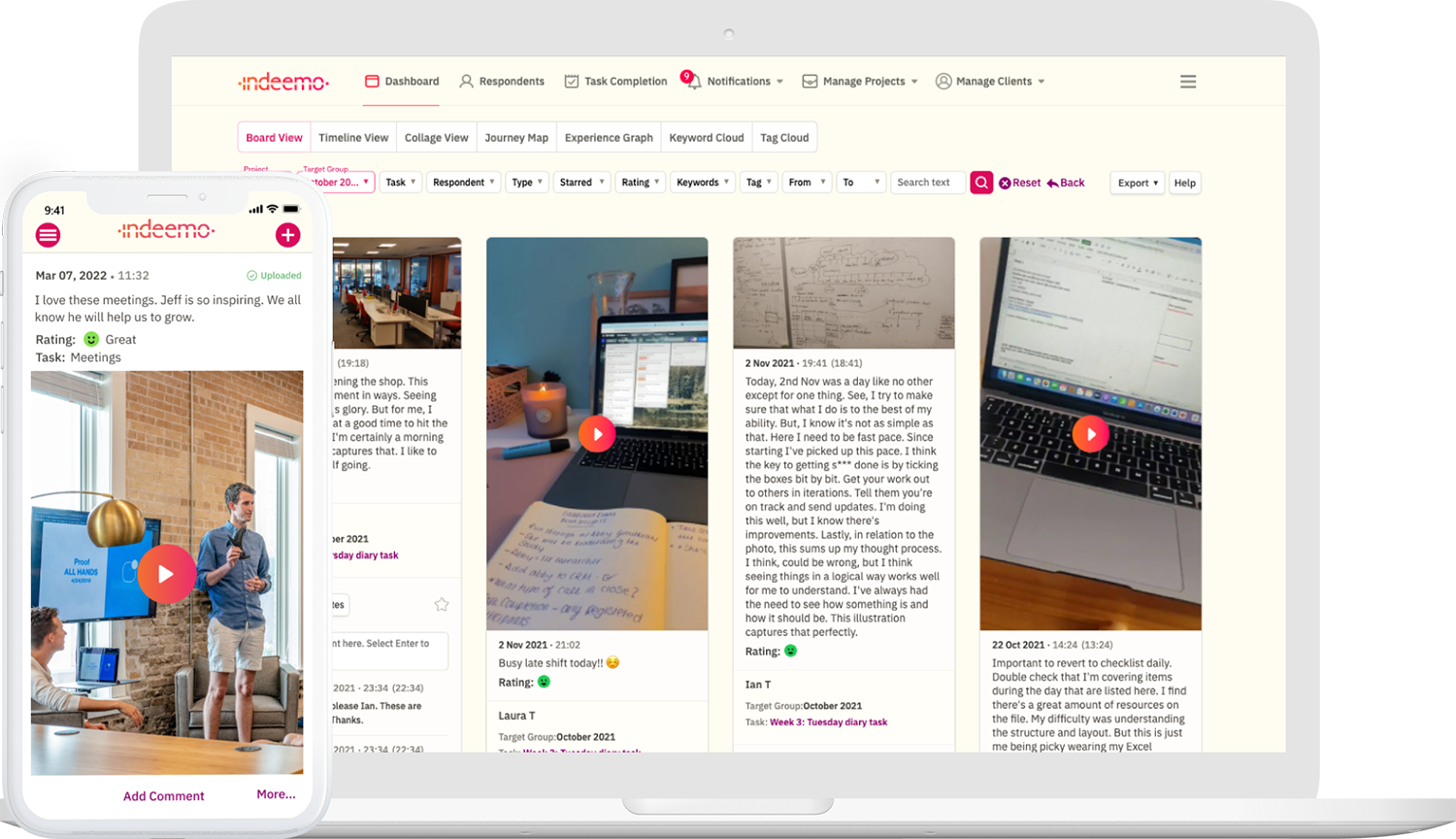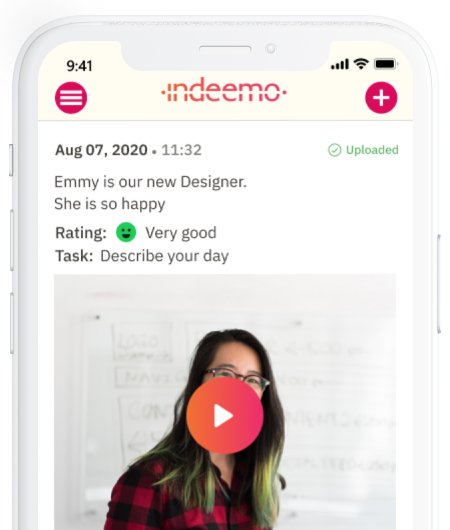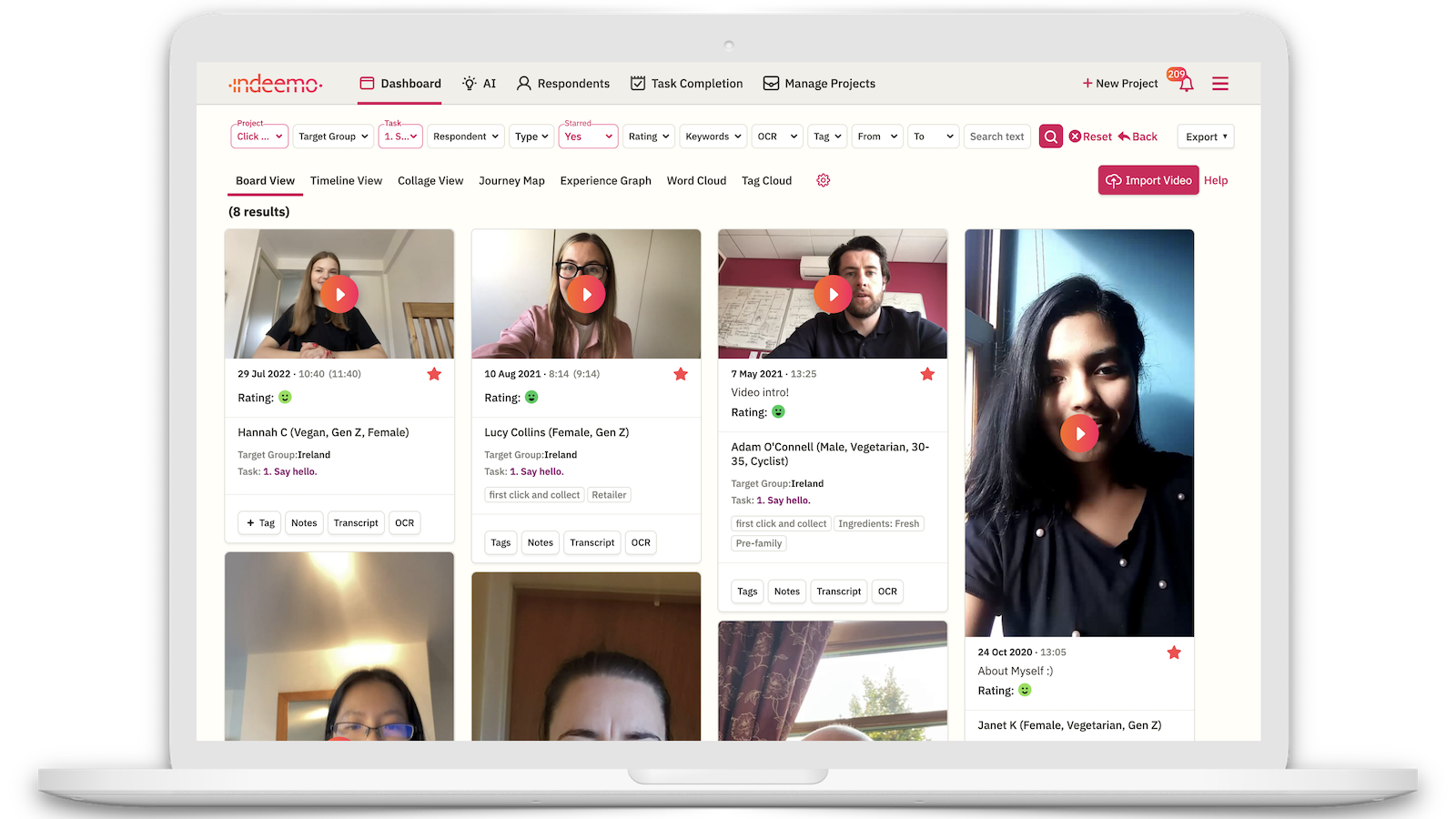Similar to the growing importance of customer experience management, organisations are increasingly investing in providing the best employee experience from recruitment to an employee's exit. Understanding the experiences of employees can be complex with many variables that need to be considered. However, we have seen a growth in employee experience research that provides a foundation for EX management teams.
In this employee experience guide, we are focusing on the power of qualitative exploratory research that can give rich insights into the experiences of employees and their journey with an organisation. The outcomes of this guide should help you shape future EX research strategies through the lens of qualitative research.
What is Employee Experience?
The concept of employee experience is not that dissimilar to customer experience. In fact, it is equally as important. First, EX and CX can be viewed as narrower subsets of human experience. Employee Experience, describes the perceptions people have of the organisation they work at. It puts a spotlight on their experiences across a number of phases of their journey with an organisation. The stages of the employee journey are often referred to as recruitment, onboarding, development, retention, and exit. Employee experience encapsulates all the touchpoints and paint points within each of these stages.
Indeemo supports all stages of the employee lifecycle
To break this down even further, employee experience refers to the experience of the recruitment and candidate journey, new starters onboarding journey, an individual's personal and professional development experiences, and the tools and technologies employees interact with day-to-day.
The importance of employee experience relates directly to the understanding of processes, practices, culture, and tools that impact employees motivation. Employee experience uncovers the meaning behind engagement and the impact various experiences have on day-to-day business operations and performances. This is where qualitative exploratory research plays an integral role in achieving this understanding, and ultimately building empathy for employees. With this in mind, how then can you adopt a qualitative and exploratory research approach to your EX management strategy?
How do you do Employee Experience Research?
A rich understanding of the employee experience requires the adoption and development of a range of research methodologies and data gathering techniques. A traditional approach to employee experience research typically involves the use of employee satisfaction surveys. Quarterly or yearly employee review interviews are commonly used to understand employee engagement and performance.
These, typically, one-to-one interviews, can be useful tools for employee feedback. However, EX management are looking further to novel research methods that can be used as either alternatives to these techniques, or as complementary approaches. You can do both. Qualify and quantify employee experience excellence. To qualify EX, we have put together a number of tips that will help you capture unknown and rich insights into the voice of your employees.
Leverage Historical Data
Although we are talking about a type of research that can involve an exploratory approach to employee experience insights - that does not mean you should underestimate the power of previously gathered data. Before you outline a new research objective, you should review data from previous employee experience research projects. There will always be value in your historical data. This data will give you an overview about what you already know about your current EX. The goal is to identify gaps that need to be addressed in your new strategy.
Integrate and Iterate
The employee journey is becoming increasingly complex. Organisations are becoming more aware of the importance of effective recruitment drives. The candidate experience is just as important as the onboarding experience, and so on. It is important that you do not attempt to capture everything across all stages of the employee experience at once. So, your objective should be built into your overall EX strategy. This means that your projects need to be integrated into EX management. By doing so, you can be iterative, agile, and focus on various stages at different points in time.
Be Employee Centric
Being employee-centric is the essence of employee experience. By pivoting from a top-down assumption-based understanding of employee motivations and engagement, you are putting the voice of the employee front and centre. Employee experience research through the lens of an exploratory qualitative approach gives you this opportunity. The techniques and tools that you adopt for this research method can be exceptionally powerful at bringing your employees' voices to the forefront of EX management.
Further reading
What is Employee Journey Mapping and How to do it?How long should employee experience research last?
If you are new to qualitative research for employee experience, it is important that you pay careful consideration to the duration of your project and the tasks you outline for research participants. First, your fieldwork does not necessarily mean you have to shadow and observe your employees as they go about their day-to-day work. Novel research methodologies, such as digital ethnography and video diaries leverage the power of technology for remote qualitative research. Nonetheless, it is important that you outline the correct duration for your employee experience research project. Why? To simply put, the longer the duration, the more difficult it will be to maintain good engagement with your research participants. We often see EX teams build in five-day fieldwork to cover the working week. Of course, being agile, you might design multiple five-day fieldwork strategies.
Employee experience research tasks
In the context of employee experience research, tasks refer to the activities your research participants will complete during the fieldwork days. Tasks can be designed in a number of ways. You may set specific time during the day for participants to complete tasks. A task list can also be sent out all at once. Alternatively, employees can be issued tasks based on the completion of previous tasks. Overall, the goal is to ensure you design the right tasks for research participants, and to choose the correct format that they are received.
Uncover meaningful employee insights
Unlike structured format of quantitative data, your analysis for this exploratory approach requires you to dig deep into the qualitative data. No need to worry, this is not as overwhelming as you may think. First, the beauty of employee experience research and qualitative methods is that you will always uncover unknown insights. The goal is to unpack the data to identify patterns of behaviour; discover themes about various experiences, and capture keywords that your research participants use to describe their experiences and emotions. Sentiment analysis is a commonly used technique for drawing out the why of employee experience. Most importantly, there are tools that you can leverage for effective employee experience research.
Tools for Employee Experience Research
As qualitative research is becoming increasingly leveraged for employee experience, organisations are also looking for tools and technologies to optimise. Qualitative exploratory research encompasses a range of methodologies - digital ethnography, video diaries, and qualitative employee journey mapping for example.
Due to the non-linear nature of employee experience and the employee journey, various tools with a range of functionalities can be adopted. What should you look out for? First, employee experience research should aim to bring the voice of the employee to the forefront. Employee diaries, particularly video diaries are exceptional at uncovering the motivations, touchpoints, pain points, and emotions of employee experience. The use of a mobile diary study allows your employees to capture their experiences in real time, with context.
To understand employee interaction with technology, organisations can utilise mobile screen recording functionalities. This enables you to understand how employees work with a system, and how they feel about various elements of their interaction with technology in the workplace.
Whilst organisations are increasingly looking to visualise the employee journey, technology can be leveraged to capture the journey in real time. In doing so, a visual and contextual employee journey map can be generated. In addition, organisations and EX teams are optimising visualisation tools that can provide a holistic view of the employee experience.
Benefits of Employee Experience Research
The key benefits that result from employee experience research relate to the insights that derive from qualitative methods. These insights directly inform and benefit the following;
Becoming Employee-Centric
Just like organisations are becoming increasingly customer-centric, this can also be said for an employee focused initiative. When we think about employees, there are many different personas. There are many different roles. Some, if not many employees, are customer facing. An organisation that is both customer-centric and employee-centric leverages on the insights that emerge from employee experience research. As these insights direct organisational change and improvements to employee experience, the benefits reflect an increase in better customer experience initiatives. The voices of the customer and the employee go hand-in-hand. For example, a qualitative approach the employee experience research will always uncover areas in your business that need improvements. It is common to see these improvement needs where employees and customers interact. Valuing the employee voice in line with customer needs will help your brand focus on what matters most to each of these stakeholders.
CASE STUDY
How we helped a research agency to understand employees perceptions to working conditions in the hospitality industry.
Improved Recruitment
We all know that employee recruitment and retention is difficult to manage. Why? For one, the marketplace is competitive. Job seekers, whilst having more options, are increasingly competing for careers at top performing companies. Employee experience research is not concerned with the experiences of employees as they enter your organisation. Moreover, EX also focuses on the recruitment experience. Adopting a qualitative research design draws insights that put the spotlight on everything from job searching, application processes, and onboarding journeys. The ripple effect of these insights play an integral role in our understanding of employee retention.
Increased Employee Retention
Employee retention is also a bone of contention for many organisations. It can be difficult to fully appreciate employee satisfaction or even dissatisfaction. The objective of employee experience research is to help organisations build empathy for their teams, and to hear each voice in the context of real human experiences. In many of the EX research projects we have supported over the years organisations have built employee experience strategies that focus on the personal and professional development of employees. This significantly impacts employee retention. First, the qualitative nature of EX research shows you the pain points of employee experiences. Second, the insights are often used to inform new EX strategies. New strategies and improved processes that result from hearing the employees voice can also then result in increases in engagement, motivation, and business performance.
To conclude - Employee experience can leverage the power of technology and exploratory qualitative research. The aim is to capture the true thoughts, behaviours and emotions of your employees to become employee-centric. The insights that emerge from EX research can inform innovative employee experience strategies across the entire employee lifecycle.









